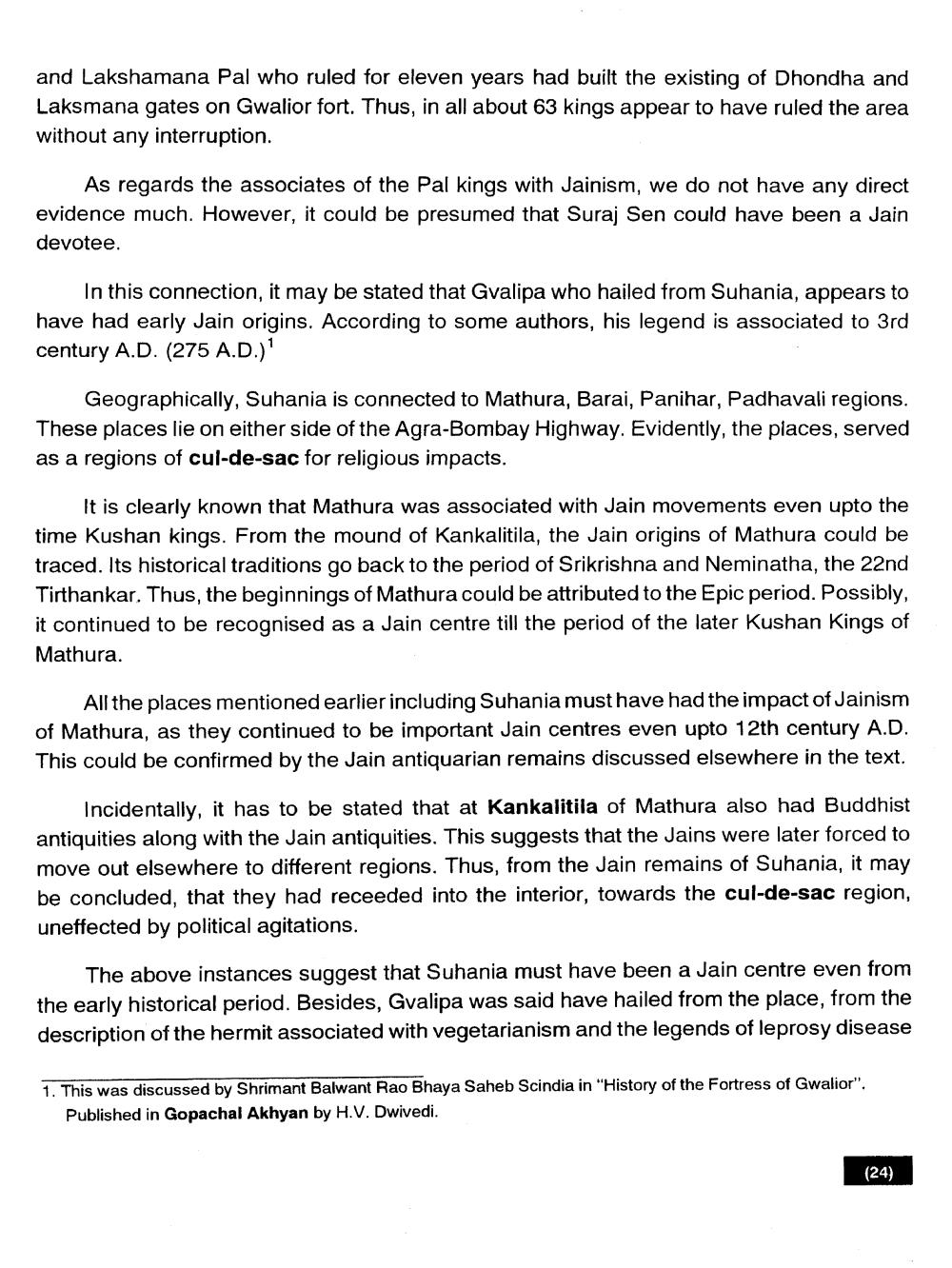________________
and Lakshamana Pal who ruled for eleven years had built the existing of Dhondha and Laksmana gates on Gwalior fort. Thus, in all about 63 kings appear to have ruled the area without any interruption.
As regards the associates of the Pal kings with Jainism, we do not have any direct evidence much. However, it could be presumed that Suraj Sen could have been a Jain devotee.
In this connection, it may be stated that Gvalipa who hailed from Suhania, appears to have had early Jain origins. According to some authors, his legend is associated to 3rd century A.D. (275 A.D.)'
Geographically, Suhania is connected to Mathura, Barai, Panihar, Padhavali regions. These places lie on either side of the Agra-Bombay Highway. Evidently, the places, served as a regions of cul-de-sac for religious impacts.
It is clearly known that Mathura was associated with Jain movements even upto the time Kushan kings. From the mound of Kankalitila, the Jain origins of Mathura could be traced. Its historical traditions go back to the period of Srikrishna and Neminatha, the 22nd Tirthankar. Thus, the beginnings of Mathura could be attributed to the Epic period. Possibly, it continued to be recognised as a Jain centre till the period of the later Kushan Kings of Mathura.
All the places mentioned earlier including Suhania must have had the impact of Jainism of Mathura, as they continued to be important Jain centres even upto 12th century A.D. This could be confirmed by the Jain antiquarian remains discussed elsewhere in the text.
Incidentally, it has to be stated that at Kankalitila of Mathura also had Buddhist antiquities along with the Jain antiquities. This suggests that the Jains were later forced to move out elsewhere to different regions. Thus, from the Jain remains of Suhania, it may be concluded, that they had receeded into the interior, towards the cul-de-sac region, uneffected by political agitations.
The above instances suggest that Suhania must have been a Jain centre even from the early historical period. Besides, Gvalipa was said have hailed from the place, from the description of the hermit associated with vegetarianism and the legends of leprosy disease
1. This was discussed by Shrimant Balwant Rao Bhaya Saheb Scindia in "History of the Fortress of Gwalior".
Published in Gopachal Akhyan by H.V. Dwivedi.
(24)




